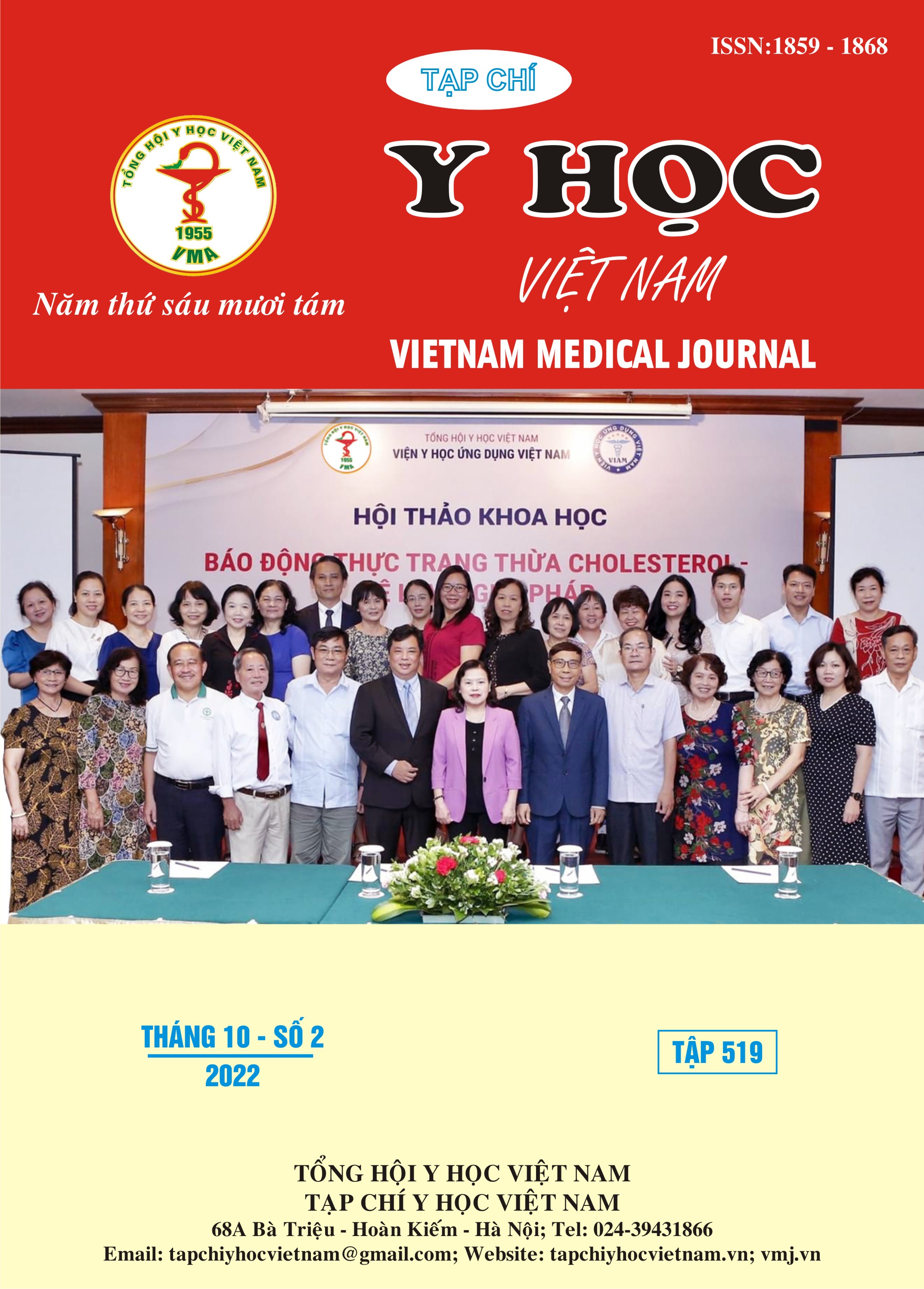KẾT QUẢ ỨNG DỤNG NỘI SOI ĐẠI TRÀNG CÓ HỖ TRỢ TRÍ TUỆ NHÂN TẠO TRONG PHÁT HIỆN POLYP ĐẠI TRÀNG GẦN
Nội dung chính của bài viết
Tóm tắt
Nghiên cứu tiến cứu ngẫu nhiên mù đơn, có đối chứng so sánh tỷ lệ bỏ sót, tỷ lệ phát hiện polyp (PMR, PDR) và adenoma (AMR, ADR) ở đại tràng gần của nội soi đại tràng (NSĐT) có hỗ trợ trí tuệ nhân tạo (AI) và NSĐT truyền thống. Trong quá trình NSĐT, bác sĩ nội soi rút dây quan sát đại tràng gần 2 lần, mỗi lần tối thiểu 4 phút, và chỉ sử dụng ánh sáng trắng. Lần rút dây 1 có/không có AI hỗ trợ dựa trên bốc thăm ngẫu nhiên; lần rút dây 2 không có AI hỗ trợ. Polyp phát hiện được ghi nhận: kích thước, vị trí phát hiện, hình thái và kết quả sinh thiết. Kết quả: PMR, AMR, PDR, ADR tại đại tràng gần ở nhóm chứng lần lượt là 14,6%, 14,6%, 58,1%, 48,4%; ở nhóm can thiệp lần lượt là 16,1%, 13,0%, 72,4%, 58,6%, không có sự khác biệt giữa hai nhóm. NSĐT có AI hỗ trợ có tỉ lệ bỏ sót và phát hiện polyp/adenoma ở đại tràng tương đương với NSĐT truyền thống, có khả năng sử dụng để đồng kiểm với bác sĩ nội soi.
Chi tiết bài viết
Từ khóa
Trí tuệ nhân tạo, nội soi đại tràng, polyp đại tràng, tỷ lệ phát hiện adenoma
Tài liệu tham khảo
2. Saftoiu, A., et al., Role of gastrointestinal endoscopy in the screening of digestive tract cancers in Europe: European Society of Gastrointestinal Endoscopy (ESGE) Position Statement. Endoscopy, 2020. 52(4): p. 293-304.
3. Zhao, S., et al., Magnitude, Risk Factors, and Factors Associated With Adenoma Miss Rate of Tandem Colonoscopy: A Systematic Review and Meta-analysis. Gastroenterology, 2019. 156(6): p. 1661-1674.e11.
4. Shergill, A.K., et al., Protective association of colonoscopy against proximal and distal colon cancer and patterns in interval cancer. Gastrointest Endosc, 2015. 82(3): p. 529-37 e1.
5. Bray, F., et al., Global cancer statistics 2018: GLOBOCAN estimates of incidence and mortality worldwide for 36 cancers in 185 countries. CA Cancer J Clin, 2018. 68(6): p. 394-424.
6. Leung, W.K., et al., Detection of colorectal adenoma by narrow band imaging (HQ190) vs. high-definition white light colonoscopy: a randomized controlled trial. Am J Gastroenterol, 2014. 109(6): p. 855-63.
7. Ikematsu, H., et al., The impact of narrow band imaging for colon polyp detection: a multicenter randomized controlled trial by tandem colonoscopy. J Gastroenterol, 2012. 47(10): p. 1099-107.
8. Lui, T., K. Wong, and W. Leung, Artifical Intelligence Image Classifier Based on Nonoptical Magnified Images Accurately Predicts Histology and Endoscopic Resectability of Different Colonic Lesions, in Digestive Disease Week (DDW) 2019. 2019: San Diego, CA.
9. Nagtegaal, I.D., et al., The 2019 WHO classification of tumours of the digestive system. Histopathology, 2020. 76(2): p. 182-188.


